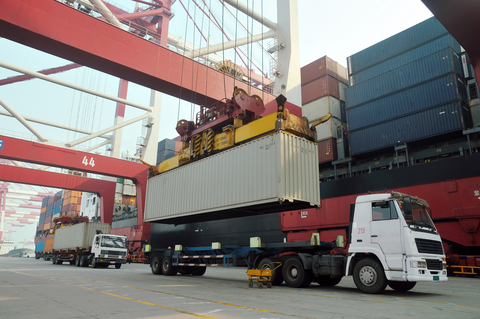What’s Up with these Chassis Fees on My International Shipping?!
Have you noticed new chassis fees on your international shipping bills lately that didn’t used to be on your invoices?
You’re not alone.
What’s going on? Many international shippers are perplexed by new chassis fees after years of importing and exporting with no such chassis fees. Why are shippers suddenly paying for chassis separately from trucking fees?
 Here’s the deal.
Here’s the deal.
Traditionally, carriers have provided chassis in the U.S. market. This practice goes way back to carriers breaking into the U.S. market with containerized shipping.
Now, carriers are getting away from providing chassis in the U.S. market. (This is actually the way it already is most markets around the world.) In fact, they’ve been getting out of the chassis side of the international shipping business in the U.S. market for the last few years, selling off their chassis.
How carriers have lost billions of dollars in recent years has popped up over and over in Universal Cargo Management’s blogs. As a piece of reducing costs and generating some much needed cash by liquidating their chassis stocks, chassis found new owners and truckers found themselves being responsible for providing the chassis necessary to load up shipping containers and get them to and from ports and shippers.
While there are arguments that the new chassis model replacing the old carrier-owned chassis model will create more efficiency at ports, the changes in practices regarding chassis have caused slow downs at ports.
Work is being done on solving that problem, but what about the problem of these chassis charges on your international shipping? Why must those charges accrue? Is anything being done to stop it?
As mentioned above, truckers are becoming responsible for providing chassis in the U.S. instead of the carriers. That means renting the chassis from the new owners who bought/are buying the chassis from the carriers.
Renting a chassis costs truckers or trucking companies between $25 and $30 pre day on average.
Those are significant costs. Costs that would be awfully difficult for the trucking industry to just swallow. How does business work? Increased costs need to be accompanied by increased income. So the costs get passed on to consumers. Profits must be made. That’s the point of business, right?
This means those chassis costs are being passed from truckers/trucking companies to shippers as new players, chassis owners, enter the international shipping game.
The chassis situation looks a little different in different parts of the country. Selling chassis on the East Coast side has been happening for a while and the transition has been a little smoother. On the West Coast, especially at the Ports of Los Angeles/Long Beach, carriers held off for a while on selling chassis. That made it hit harder when the selling really started taking off in Southern California.
Shortages on chassis being where they’re needed when they’re needed currently seem like larger problems on the coasts than places like the Midwest. But everywhere in the country, adjustments have to be made for the new chassis practices of international shipping in the U.S. market. And that’s not to say the chassis situation doesn’t have potential to become more difficult in the Midwest than it currently is.
There is no single, clear solution for the logistic problems created by shifting chassis practices. The one thing that does seem consistent is the fees. Chassis fees are popping up all over the country.
At least now you know what the deal is with them:
The costs have trickled from carrier to trucker to shipper.
Would it feel better if trucking companies just increased their prices to cover chassis prices instead of adding it as an extra line item for chassis fees? Six one way, half dozen the other.
No matter what comes in the international shipping industry, Universal Cargo Management is ready to provide you with the best service possible. And we’re always ready to give you free freight rate pricing.
